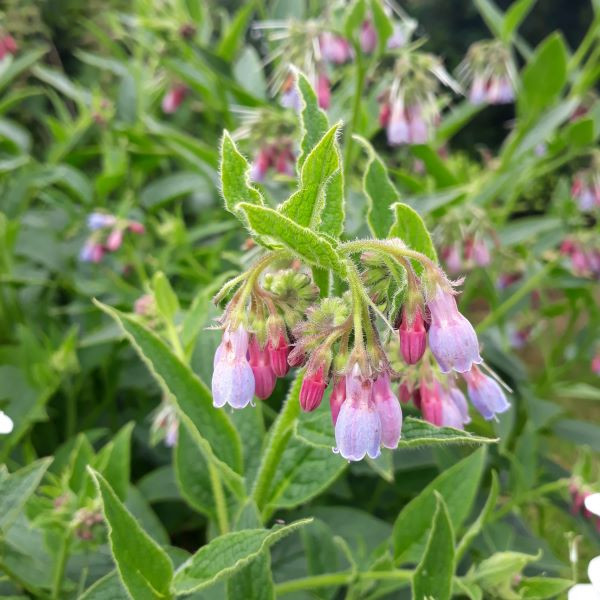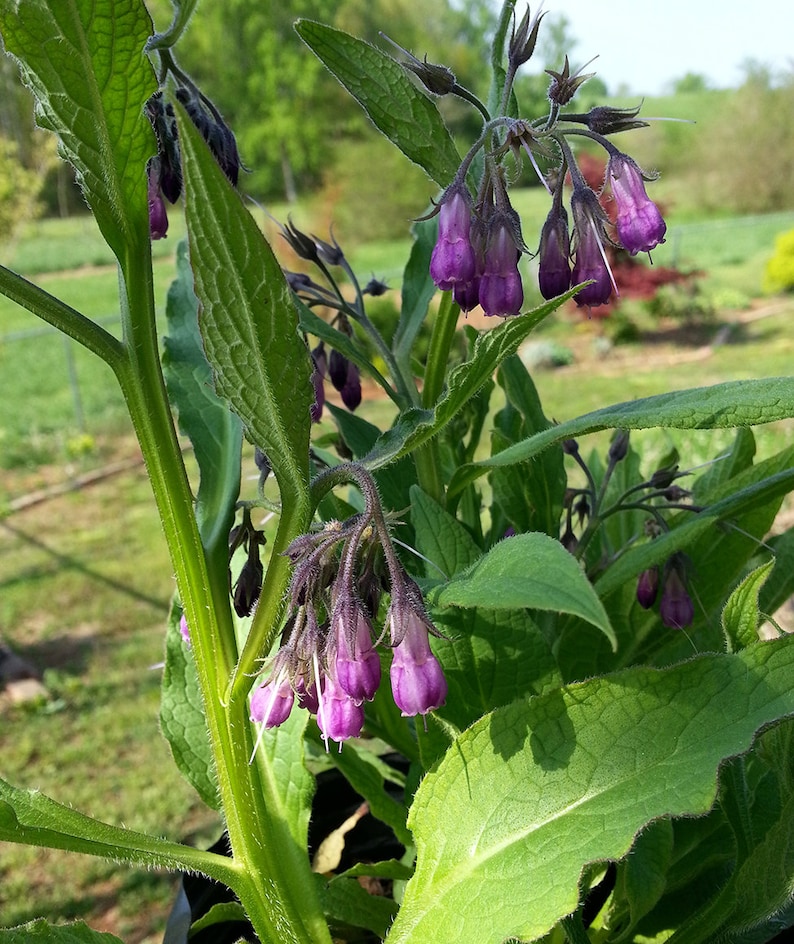

There is widely found in meadows and waste places. Take care in planting Common Comfrey as it is considered an invasive plant in the eastern U.S. Comfrey leaf is traditionally used topically for healing burns and bone. It is easily adaptable to many soils, but prefers those which are moist and fertile. Comfrey Leaf, Symphytum officinale Green, slightly sweet, and cucumber-like.

#BUY SYMPHYTUM OFFICINALE FULL#
Grow Common Comfrey in full sun or partial shade in hot climates. Repeated ingestion can lead to serious liver damage and death. Roots appear to be more toxic than stems and leaves. Also, new plants can be propagated by dividing the roots of established plants.Īll parts of common comfrey contain toxic alkaloids. Flower color depends on variety and can be either pink fading to blue, white or creamy yellow. They form in distinctive curled clusters having an appearance similar to that of a scorpion's tail. Flowers are bell shaped and either yellow or blue. While they are still bristly they lack the petioles as seen on the lower portions of the plants.įlowers are borne on 2’-3’ tall flowering stems. Towards the top of the plant the leaves are smaller. Symphytum Officinale as per Homeopathic Materia Medica The root contains a crystalline solid, that stimulates the growth of epithelium on ulcerated surfaces. It bears bristly lower leaves, up to 12 inches long, that are attached to winged leaf stalks (petioles) that emerge from the base of the plant. This herbaceous perennial can grow to 5’ in both height and width at maturity. It is rich in calcium, potassium, phosphorus, vitamins and trace elements. Also known as Knitbone, comfrey is a great healing herb to use as a poultice. ** Please note: Comfrey should not be taken internally as, even in small doses over time, it can be harmful.Description Common Comfrey is best known as culinary herb used to make teas and poultices out of its leaves. Home / Shop / Perennial Vegetables and Herbs / Herbs / Comfrey (Symphytum.
#BUY SYMPHYTUM OFFICINALE HOW TO#
To learn how to make your own comfrey compost tea and how it benefits your garden, read our blog, Comfrey: Your Compost Companion. Because the plant yields large amounts of leaves, breaks down quickly and contains natural compost activators, you can create a compost tea from comfrey for fertilizing your plants.

More recently, Comfrey has been the subject of a hot new composting trend. Though it makes a beautiful addition to the garden, it can sometimes be bothersome to get rid of, as new shoots grow easily from pieces of severed roots.
#BUY SYMPHYTUM OFFICINALE SKIN#
You can then soak the sunburned areas in the cooled tea to help reduce pain and discomfort, and promote healthy skin regeneration.Ĭomfrey enjoys a wet, shady area and will do well in most soil types. Just steep fresh comfrey into a tea for external use, by straining the leaves and letting it cool. The plant's natural Allantoin levels also make it a great herb for after sun care. When mashed and heated into a poultice or applied as a salve, Comfrey can also make a wonderfully mild astringent great for ulcers and sores. Common Comfrey is also referred to as ‘Knitbone’ as it is the plant's high concentration of Allantoin that helps reduce inflammation of sprains and broken bones. Comfrey is one of our most popular medicinal herbs.


 0 kommentar(er)
0 kommentar(er)
